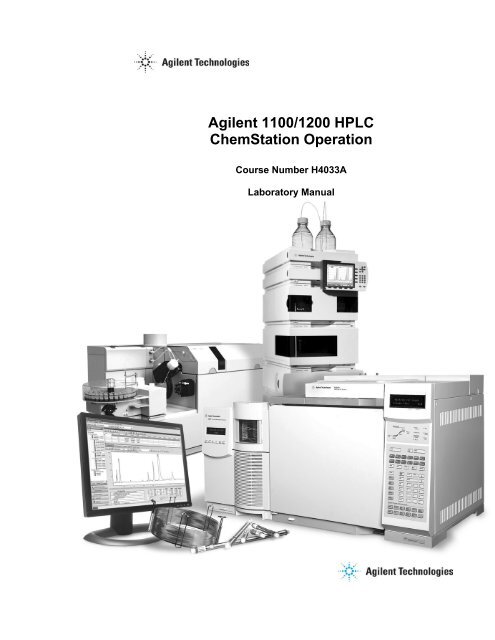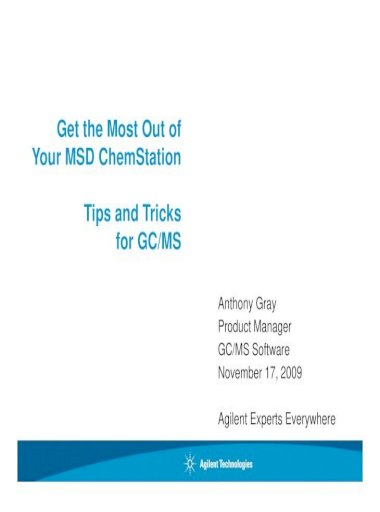

#AGILENT CHEMSTATION 32 EDITING SCAN PARAMETER THRESHOLD SOFTWARE#
Automated sample processing and quantitation with PyMS can provide substantial time savings compared to more traditional interactive software systems that tightly integrate data processing with the graphical user interface. We demonstrate data processing scenarios simple to implement in PyMS, yet difficult to achieve with many conventional GC-MS data processing software. In real-life GC-MS data processing scenarios PyMS performs as well or better than leading software packages.

PyMS provides limited graphical capabilities and can be used both for routine data processing and interactive/exploratory data analysis. PyMS is a novel software package for the processing of raw GC-MS data, particularly suitable for scripting of customized processing pipelines and for data processing in batch mode. A set of specifically designed experiments was performed in-house and used to comparatively evaluate the performance of PyMS and three widely used software packages for GC-MS data processing (AMDIS, AnalyzerPro, and XCMS). PyMS implements parallel processing for by-row and by-column data processing tasks based on Message Passing Interface (MPI), allowing processing to scale on multiple CPUs in distributed computing environments. A novel common ion single quantitation algorithm allows automated, accurate quantitation of GC-MS electron impact (EI) fragmentation spectra when a large number of experiments are being analyzed. PyMS currently provides a complete set of GC-MS processing functions, including reading of standard data formats (ANDI- MS/NetCDF and JCAMP-DX), noise smoothing, baseline correction, peak detection, peak deconvolution, peak integration, and peak alignment by dynamic programming. PyMS comprises a library of functions for processing of instrument GC-MS data developed in Python. While interactive processing remains critically important in GC-MS applications, high-throughput studies increasingly dictate the need for command line tools, suitable for scripting of high-throughput, customized processing pipelines. Most existing software tools for processing of raw instrument GC-MS data tightly integrate data processing methods with graphical user interface facilitating interactive data processing. The hierarchical cluster analysis revealed that samples collected in Latvia are not distinct from foreign clusters, thus they do not form distinct branches as they have overlapping qualities and similar origins.Gas chromatography–mass spectrometry (GC-MS) is a technique frequently used in targeted and non-targeted measurements of metabolites. The collected samples were characterized by using morphological descriptors and molecular markers (RAPD) and showed large within and among accession diversity thus indicating variability potential for future selection. The samples that were collected in Latvia were characterized by high levels of bisabolol oxide A.

All samples were characterized with high quality, reaching thresholds of European Pharmacopoeia for essential oil content and apeginin-7 glucoside. In this study, we evaluated the genetic and morphological diversity as well as the chemical profiles of plants collected from semi-wild populations in Latvia as well as various varieties found in Central Europe. Chamomilla recutita is a cross-pollinating medicinal plant widely used in traditional medicine both in Latvia and globally.


 0 kommentar(er)
0 kommentar(er)
